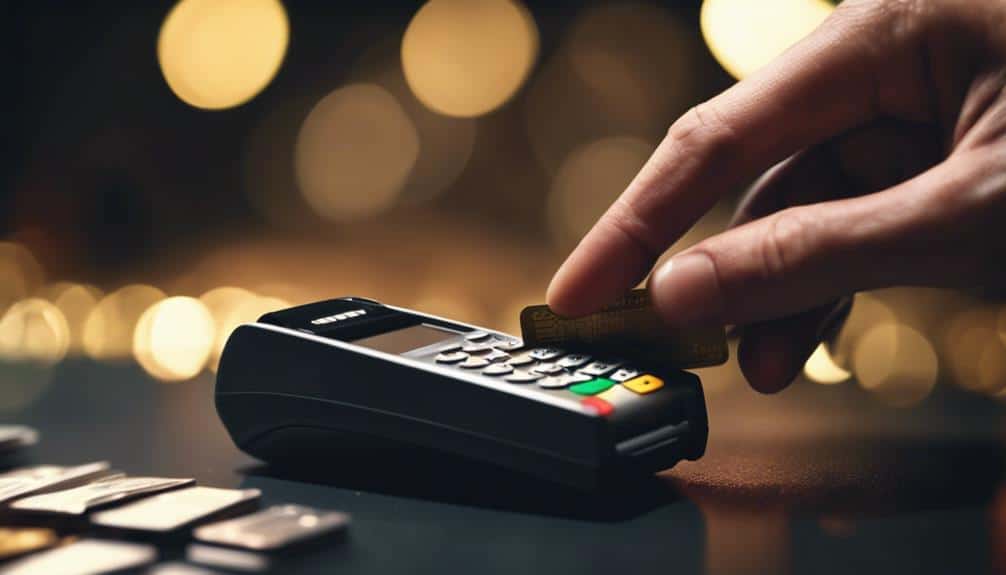The transition to chip card technology in America serves as a critical case study in understanding consumer behavior amidst technological change. While the security enhancements are evident, the accompanying challenges—particularly regarding user experience and the clarity of communication—have often led to confusion. This raises important questions about how effectively stakeholders can engage with consumers during such transitions. Addressing these issues not only illuminates the lessons learned but also prompts a deeper examination of the broader implications for future technological implementations. What strategies could ensure smoother transitions in the face of inevitable change?
User Experience Challenges
The transition to chip card technology in the United States, initiated in October 2015, has presented significant user experience challenges that have hindered widespread acceptance among consumers.
Many users have encountered consumer confusion due to the unfamiliar process compared to traditional methods, leading to feelings of frustration akin to the outdated experience of writing a check.
Research on change highlights that fear of lacking the necessary skills contributes to this challenge, provoking emotional responses that include feelings of unintelligence or being out of touch.
As consumers grapple with these obstacles, it is essential to address their concerns and facilitate a smoother adaptation process, thereby empowering them and enhancing their confidence in utilizing this new technology effectively.
Benefits Vs. Discomfort of Change
Many consumers remain unaware of the significant security enhancements that chip cards provide, often overshadowed by the discomfort associated with the transition process.
This discomfort frequently manifests as frustration at longer processing times, leading to a reluctance to embrace change.
To foster a positive change mindset, it is essential to enhance benefit awareness.
By consistently communicating the advantages of chip technology—such as reduced fraud risk and enhanced data protection—consumers may begin to shift their focus from the temporary inconveniences to the long-term benefits.
This shift can mitigate negative perceptions and encourage a more supportive attitude toward technological advancements, ultimately empowering consumers to navigate the transition with greater confidence and ease.
Communication and Clarity Issues
Effective communication is crucial during the transition to chip card technology, as misunderstandings can significantly hinder user acceptance and satisfaction.
Notification clarity plays a vital role in this process, as many users misinterpret the loud sound indicating a completed transaction. This sound perception can lead to feelings of embarrassment if consumers mistakenly believe their card has been declined.
To minimize confusion, retailers should focus on user-centered design, ensuring features are intuitive and well-explained. Educating customers about the purpose and functionality of these notifications can foster a clearer understanding.
Role of Employee Engagement
Miscommunication can derail the user experience during significant technological changes, making the role of employee engagement increasingly important. Retail workers are crucial in guiding customers through new processes, and their engagement can greatly influence the success of transitions like the chip card rollout. Employee advocacy is essential; trained staff can alleviate user concerns and enhance satisfaction. To optimize this process, a structured technology training program is vital. Below is a summary of the key aspects of employee engagement:
| Aspect | Importance |
|---|---|
| Employee Advocacy | Promotes trust and user confidence |
| Training Programs | Ensures staff are knowledgeable |
| Empowerment | Increases ownership and accountability |
| Communication Skills | Enhances customer interaction |
| Feedback Mechanism | Improves adaptation strategies |
Implementation Readiness Factors
Successful implementation of new technologies, such as chip card systems, hinges on careful evaluation of readiness factors.
One critical aspect is technology reliability; ensuring that chip card readers function seamlessly is essential for fostering user acceptance. Non-functional machines can lead to frustration and diminish trust in the system, prompting skepticism among users about the benefits of the transition.
It is imperative to verify machine certification before deployment and to establish usability benchmarks that align with user expectations. A thorough assessment of these readiness factors not only prevents future complaints but also enhances the overall experience, ultimately paving the way for a smoother integration of chip card technology into everyday transactions.
Prioritizing these elements is vital for a successful transition.
Frequently Asked Questions
How Do Chip Cards Protect Against Fraud Compared to Magnetic Stripes?
Chip cards enhance security benefits by utilizing encrypted data and dynamic authentication during transactions, significantly reducing fraud risks compared to magnetic stripes. However, this increased security often comes at the cost of transaction speed, leading to user frustration.
What Should I Do if My Chip Card Is Not Working?
If your chip card is malfunctioning, first check for physical damage. Next, try using it at a different terminal. If issues persist, contact your card issuer for troubleshooting tips and possible replacement options.
Are All Retailers Required to Accept Chip Cards?
Not all retailers are mandated to accept chip cards; however, merchant obligations involve providing secure payment options. Consumers should be aware of their rights, ensuring they can choose establishments that prioritize modern payment technologies.
How Can I Speed up Transactions With Chip Cards?
In an era where transaction efficiency is paramount, leveraging chip card advancements can significantly enhance speed. Educating users on proper use, optimizing reader functionality, and ensuring machine readiness are crucial steps to streamline experiences efficiently.
What Are Some Common Myths About Chip Card Technology?
Common myths surrounding chip card technology include misconceptions about chip card security, such as believing they eliminate fraud entirely. In reality, while they enhance protection, consumers must remain vigilant against evolving threats and phishing attacks.
Final Thoughts
The transition to chip card technology in America serves as a pivotal case study in user experience challenges, illuminating the complexities of change. As confusion and discomfort surfaced, the critical roles of communication, employee engagement, and implementation readiness emerged. Each lesson learned hints at a broader narrative: what if these strategies could transform future technological adoptions? The implications of this transition extend beyond mere inconvenience, suggesting that proactive measures could redefine the landscape of consumer trust and satisfaction.





